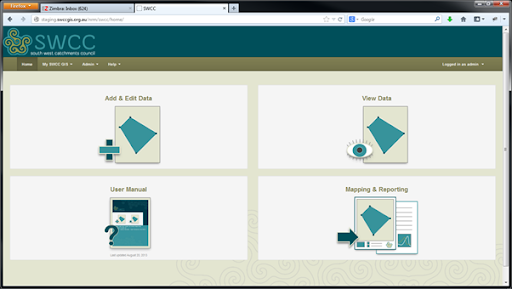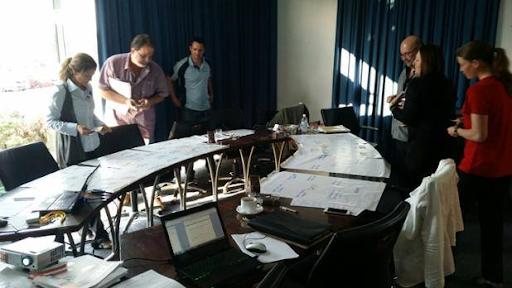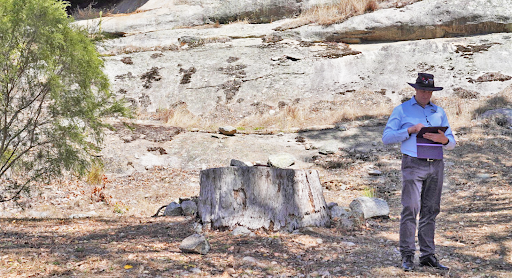Geographic & Reporting Information Database 24/06/2013 - 31/01/2025
It is with a heavy heart that we announce the passing of the last of our Geographic & Reporting Information Database (GRID) instances.

GRID started out life as a system for the South West Catchments Council (SWCC), who engaged Gaia Resources to help them implement an on-line spatial system that was cost effective for them to be able to use and accessible by their staff across their region in the south west of Western Australia. I distinctly remember demonstrating the system - which became GRID thanks to their naming of it - to the SWCC Board in Bunbury in 2014, and was able to follow a presentation by another group about the awareness of SWCC in the region with our presentation of interactive maps that showed all the events that the team had run in the previous 12 months - showing a strong correlation that immediately proved the worth of the system.
From the humble beginnings of helping SWCC map their impacts, GRID was taken up by a range of other NRM groups in Western Australia. At the peak use of GRID, we had instances at SWCC, Rangelands NRM, South Coast NRM (who also ran the Project Dieback instance), Peel-Harvey Catchment Council, Perth Region NRM, the Eastern Metropolitan Regional Council, Northern Agricultural Catchment Council, the Land For Wildlife program and the State NRM program. We had some amazing times with GRID in those days - such as running a workshop at the State NRM conference in 2015 in Mandurah with all the GRID “champions” as we called them, where they were using our first set of “Gaia Bucks” in a prioritisation exercise, trying to work out the collective roadmap for GRID enhancements for the coming years.

The NRM landscape changed dramatically in Western Australia in 2018 with the introduction of competitive grant programs that have seen major reductions in many of the NRM programs since that time. That was the start of the end of GRID - as it was an older system that we had been providing for the lowest possible cost (in line with our mission statement of supporting groups who work with the environment), so we were just maintaining the code as best we could. GRID limped on - it was even part of the South Coast NRM’s win in the Environmental Biosecurity Award in 2021.
However, we were heading towards the need for a refresh, a GRID 2.0 as it was nicknamed internally. My third most distinct memory around GRID was presenting to the NRM CEOs at the time about the possibilities of GRID 2.0 - and getting no support. I knew at that stage that the writing was on the wall for GRID 2.0, and for GRID itself, and so we shifted our focus to trying to help the NRM community move to other systems, like MERIT, or other spatial systems like QGIS.
Meanwhile, for some NRMs that had very little in the way of resources, spatial expertise, or systems, GRID needed to limp on and keep providing the service as best it could for as long as it could. In the end, we were delivering GRID at just the cost of the server runtime to several NRMs to help them preserve their resources for new systems. GRID was an old, creaky system that no-one wanted any more - thankfully there was no real “Old Yeller” moment at the end; GRID just kept on doing its thing, and even in the last day or two of its operations all we needed to do was to bump up the RAM a bit to allow the last few big data exports, and it still delivered valiantly on what it was there to do.
If we add up what we invested in GRID ourselves versus what we got in terms of financial return you could never call it a success. However, for a time there we could generate interactive maps with regularly updated data to show off the work that the NRM community could do. That was a huge step forward - GRID was able to deliver data using web services and could power the maps behind all sorts of interesting external web sites like Project Dieback, Pilbara Corridors and Climate Change sites. It remains a capability that the NRMs are now trying to reach for in other ways; we were ahead of the curve and able to really support the NRM community in delivering on their purpose and mission. That has to count as a success.
GRID was worked on by many people over the years at Gaia Resources and many people were instrumental in the raising of it into the success that it was. In particular, clients like Joanna Hugues-dit-Ciles, Mike Christensen, Gaye Mackenzie and Ray Chilton all helped to steer GRID to solve the problems that they needed it to, although we never quite did get a cat on a map for Gaye. Our team, especially people like Tracey Cousens, James Houston, Jake Geddes, Ben Khoo and Shay Telfer all developed and kept GRID working and humming for as long as we could.

I have been quietly dreading the day that the last GRID instance was turned off. There are so many hours of sweat and tears in that codebase by so many people, but more than anything it was my hope that GRID would mean that people working at the front line of protecting, conserving and restoring the environment would have a tool to help them do what they needed. For a while we had that, and I will hold onto that memory and consider all our effort was worth it.
GRID passed away quietly in the afternoon of the 31st January, 2025, almost 12 years after we launched it. The South Coast NRM team downloaded the last data exports from the system, and Shay quietly turned off the cloud servers, leaving a few of us with a wistful expression on our faces at the end of an era. To the NRM community (past and present) - thank you for the opportunity to make a difference, and we hope to help you again in the future.
While the door may be closing on GRID we continue to work with the NRM community - we’re working on some projects around data and data standards at the moment and looking at how our data science team can support this important community. We will continue to follow our mission at Gaia, to make sure that we deliver responsible technology solutions to make the world a better place. We’re always happy to have a chat about how we can help people working with the environment - feel free to drop us a line, or start a conversation with us on LinkedIn, Facebook or Instagram.
GRID has been a big part of that journey for us, and we will remember it for many years to come.
Piers